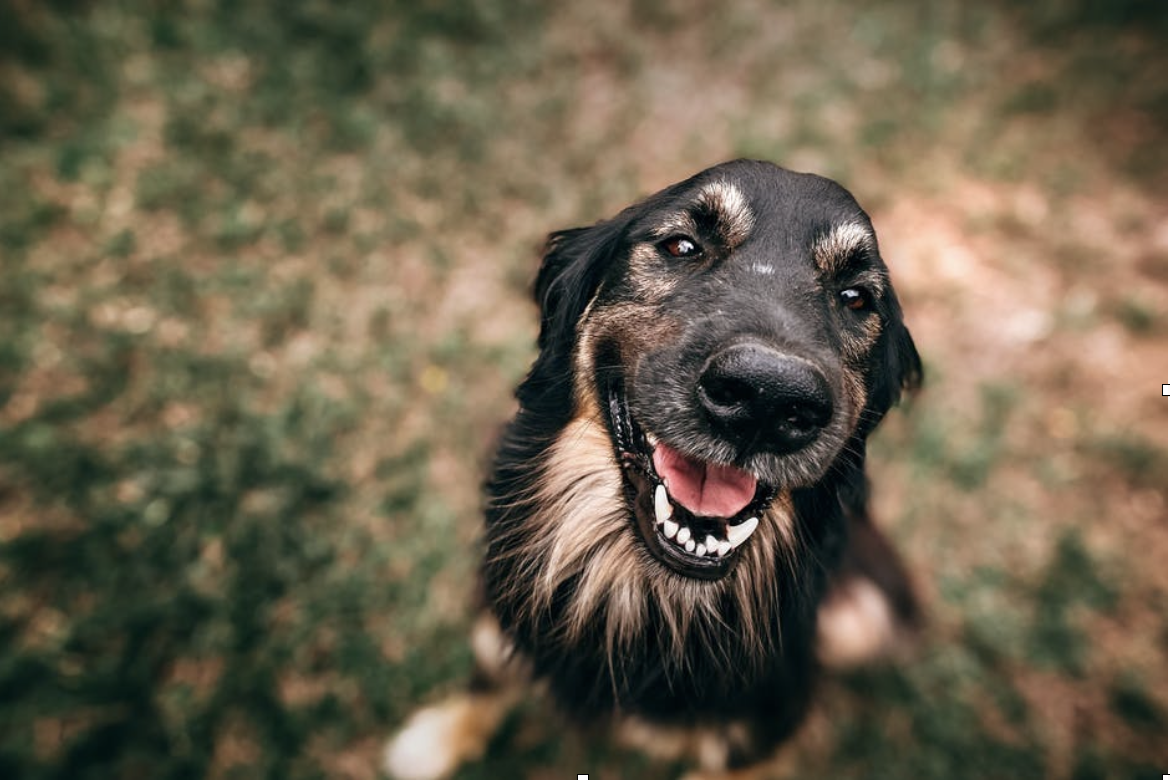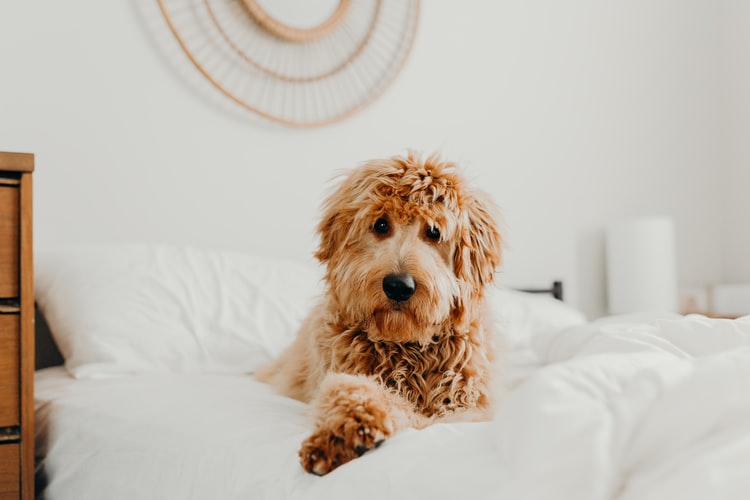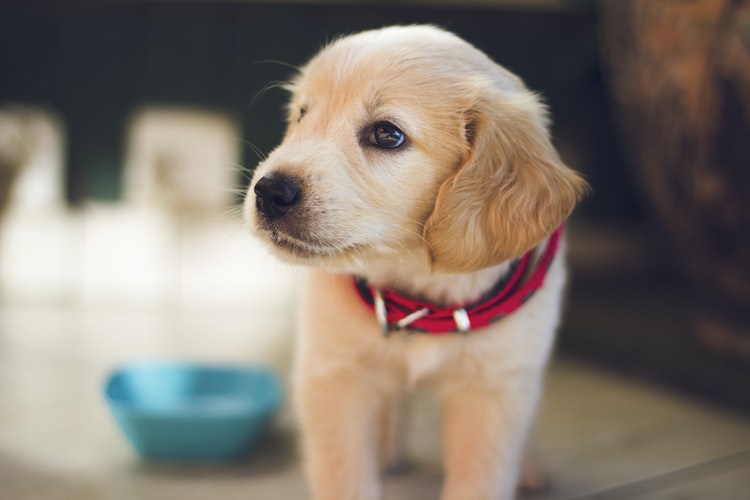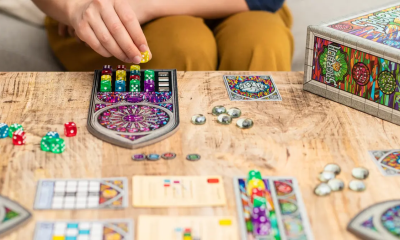Pets
3 Key Ways to Dog Proof Your Home

Are you preparing to bring home a new furry friend? If you’re preparing to welcome a dog into your home, there are some things you will want to do beforehand to ensure that they are kept safe while also limiting the amount of damage done to your home and possessions.
To learn more about some of the best dog-proofing solutions out there, keep reading. In this guide, we will go over some dog safety tips for the home that can help you prepare for a new pet.
1. Baby Proofing Solutions
A great way to think about your home and how you might prepare it for a dog, think about the situation similarly to how you would if you were to babyproof your home, especially if the dog you are bringing home is a puppy. There are many babyproofing solutions that you can use to secure your home. In the early stages of bringing your dog home, you will want to make sure that you limit their access to rooms that you are not in.
Keeping a constant eye on your pup when you are first allowing them to adjust to your home is a good way to monitor them and keep them out of trouble. A great way to block your dog’s access off to certain areas of your home is to use baby gates. You can also use power strip covers and electrical outlet covers to keep your dog safe from these hazards.
2. Limit Saftey Hazards
You can also get a containment station for your power cords to make sure your dog does not have access to them for chewing, which could result in serious injuries. Some dogs are prone to opening doors, drawers, or cabinets, and if this is the case, you can get safety locks for these areas. You can find many of these solutions when looking for home babyproofing products.
If you have other pets, such as a cat, you may want to get a dog proof cat feeder to make sure they aren’t taking all of your cat’s food for themselves which could upset their stomachs.
3. Limit Clutter
The more items that you leave lying around means that there are more items that your dog can attempt to destroy. For this reason, before you bring a dog into the home, it can be helpful to do a deep clean in which you declutter your home while also creating some organizing systems. This will allow you to make a place for everything so that you can make cutting down on clutter a long-term goal that is actually attainable.
This will allow you to keep your items safe while also making sure that you are not leaving hazardous materials out for your dog to ingest.
Dog Proof Your Home: A Simple Guide
Make sure to consider these tips and tricks so that you can dog proof your home before picking up your furry new friend.
Head to the “Pets” section of our site for more advice on this topic.
Expert Advice
Tips for choosing a suitable bed for your dog

Do you want your little furry friend to sleep great? Well, follow these tips that we bring you.
Do you know what bed your dog needs? Surely not, in fact, you probably don’t even know that choosing a good bed for your pet is essential. We already tell you: it is essential for you to have a good life, to maintain your energy.
You may not know how to choose the bed for your pet. But you do not have to worry , since you are in the most ideal place. Our mission is to help you with this choice so that you make the perfect purchase and that your great friend sleeps soundly every day.
How to choose a good bed for your dog
Choosing a suitable bed for your four-legged companion is very important. Imagine what it is like to sleep in a place where you feel uncomfortable, in a place that does not let you sleep well. How could you face your day to day if there is no way to recharge your batteries?
The same thing happens to animals. For that reason, it is essential that you know how to choose the perfect bed for your pet. And do not worry, here we bring you the fundamental tips so that you can achieve it without having to break your head too much.
The first thing: breed and size of the dog
Without a doubt, the most important factor when buying a suitable bed for dogs. Is your pet going to be really comfortable in this bed? Although we will go into that later, the first thing to make sure of it is that it is suitable for the size, for the weight and, ultimately, for the breed of your pet.
You wouldn’t put a Chihuahua in the same bed as a German Shepherd , much less the other way around. Try to see how much space your dog usually occupies while he is sleeping and take that as a reference when choosing a bed.
Do you sleep in several different postures? Well, try to have them all as a reference so that you can do the same in your bed. The most advisable thing is that you pay special attention to how much it occupies when sleeping with the position in which it stretches the most.
If the bed fits that particular size well, it will fit all the others perfectly and seamlessly. In short, it will be the perfect size for the animal. Make sure you adhere to this point, above all.
Is it really comfortable?
Checked and secured the size well, do not hesitate to review the comfort that the dog bed provides. Generally, something with a good mattress inside is more than enough, even wicker baskets with cushions or molded huts.
You can find practically everything, but the best way to get it right is to see where your pet usually sleeps , as long as it is a comfortable area. You are already in the habit and will therefore miss sleeping on something with a different harshness.
Keep this in mind and choose something that is similar in size, shape, texture and, of course, type of material. It should be fluffy, as this is how you really ensure that the pet is truly comfortable and can sleep peacefully.
Easy to clean materials
Although the main thing is that the animal feels comfortable, it is also very important that the bed is easy to clean. It is very likely that it will stain, and if the bed is stained, your pet will also stain. And that, we already anticipate, will bring numerous problems.
So look for a dog bed that has waterproof mattresses , which will make cleaning much easier later. Besides that, do not have too many nooks and crannies that complicate the task later.
If, in addition, the materials are insulating, better than better. The dog will not get cold or additional heat because of the bed, while it will not stain so easily and will allow you to handle it as easily as possible.
What if I look for a bed for a puppy?
With puppy beds many problems often arise, because you do not directly know where to start. Should they have their own bed? Should they buy something designed for their small size, if they are to grow?
The truth is that the answer is a resounding yes to both questions. The dog must have a resting place designed by and for him since he is little . So you know that this is your place and that your sleeping conditions are different from those of people.
On the other hand, it is common for puppy beds to have supports on the sides so that they feel safer and can sleep more peacefully. When they have such a short time to live, they tend to be more fearful, and anything that generates more sense of security is welcome.
It can be a bit problematic, because you have to change the bed every so often because there are breeds that do not stop growing, but it is the best solution , the most comfortable for the animal and the safest too.
Don’t hesitate to make a good investment in this regard. Your best friend will appreciate it like few others, and will be able to live much healthier thanks to having a good rest. Sorry, the best rest.
It is not difficult at all to choose the right bed for your dog, but you do need to invest some time and, above all, control the size of the animal and the area where it will sleep. Remember all the guidelines that we have given you, because they will be of great help to you.
In the end, the one who will appreciate it most will undoubtedly be your pet. She will sleep better and you will be able to enjoy her company much more , as she does yours.
Expert Advice
Can dogs eat grapes?

Grapes are a fruit that have many benefits for people’s health. Now, are grapes bad for dogs? In this article I will tell you about can dogs eat grapes?.
Can dogs eat grapes?
Grapes are a fruit with a multitude of properties : antioxidants, rich in fiber, contain vitamin C and potassium stands out among its minerals. Pure benefit for people’s health. But can dogs eat grapes?
Although we really enjoy sharing food with our dog, in the case of this fruit we must not: grapes are toxic to dogs . They are included in the list of foods that pose a danger to your health .
Why are grapes toxic to dogs?
Any dose of grapes that the dog takes is a problem for its well-being . In addition to causing poisoning, this higher concentration of blood urea nitrogen and / or serum creatinine can lead to acute kidney failure .
Dogs allergic to grapes
Grapes and dogs are a dangerous combination since, despite numerous investigations; there are no conclusive results on the mechanism of toxicity of grapes. Each dog can have a different allergic reaction when eating grapes.
What happens if I give my dog grapes?
Although it is not known exactly whether a single grape is potentially harmful or not, feeding your dog grapes can be dire . There are numerous cases in which dogs have suffered serious problems or have died:
- Eating about 4 or 5 grapes caused kidney failure in an 8.2 kilogram dachshund .
- Another dog developed kidney failure from taking 2.8 milligrams per kilogram of weight, according to the Journal of Veterinary Internal Medicine.
- A dog had to be euthanized after consuming 4.7 grams for every kilogram of weight .
How do I know if my dog has eaten grapes?
You will know of accidental ingestion of grapes from symptoms. They appear after 6 hours of taking them and before 24 hours have passed . These are the signs you should pay attention to:
- Vomiting
- Diarrhea.
- The dog does not eat .
- Lethargy .
- Abdominal tenderness
- Traces of grapes in the vomit .
- Traces of grapes in the stool .
- The dog is overly thirsty (also known as polydipsia as we explain here ).
What to do if my dog eats grapes
If you observe any of these symptoms and suspect that your dog may suffer from grape poisoning , see your veterinarian immediately . In consultation, the specialist will carry out the pertinent tests to see if the grapes are the problem.
Treatment for treating a dog for grape poisoning varies depending on the symptoms.
The most obvious sign is kidney failure. To find it, the tests performed by the vet would show elevated urea and creatinine, oliguria or anuria, among others. If these last two come out, the prognosis is not very favorable.
Most dogs are gluttonous by nature. Everything they see they want to put in their mouths, and we also like to share food with them. But foods like grapes can be very harmful, you have to be careful . And they are not the only ones
Expert Advice
Tips for bringing a puppy home

bringing a puppy home is a very beautiful and wonderful experience.
However, many families forget to take into account how difficult it can be, especially in the first days after they arrive home.
Receiving a puppy at home is a great joy for the whole family, but it is important that the puppy feels good, comfortable and that all its basic needs can be met.
What should be bought before bringing a puppy home?
- Dog houses:
Although it is a puppy, it is important that it has its own space inside the house.
Therefore, it will be important to have a dog house, where the dog can feel safe and sleep peacefully. Finding dog houses at a good price is not difficult, but it is very necessary.
Why a house? Because the puppy will feel more protected and secure than on a blanket. A house, for a puppy, is a perfect den. Check out https://murshidalam.com/tips-for-choosing-a-suitable-bed-for-your-dog/
- Feeder and drinker:
A puppy also needs its own space to eat and drink.
It is recommended to purchase the trough and trough made of a resistant material, as well as stainless steel.
In addition, it will be very easy to clean them to maintain proper hygiene after each meal.
Another recommendation is that they be ceramic with a heavy base to prevent them from turning it over.
Puppies are very playful, and if you don’t buy them from a sturdy material, they will become your toys.
- Your own toys and something to chew on:
A puppy enjoys playing, running, and chewing very much, so they need to have their own toys for fun.
In this way, you avoid taking objects such as socks or shoes for this purpose.
Puppies, while their teeth are coming out, will want to chew everything.
The adopter must ensure that the puppy not only has his toys, but something to chew on.
It is important that they are not toxic, that they are not so hard or small and that they can be used for a long time.
- Products for the general hygiene of the puppy:
Puppies should be bathed from three months of age, but regardless of the puppy’s age, having all the products that will be needed for hygiene is important.
It is necessary to have: comb or brush according to your skin and coat type, nail clippers, nail scissors and, of course, a dog shampoo.
- Puppy food:
When a puppy comes to his new home, everything is new for him, it is a total change.
Something important that should be taken into account is that, at first, the dog eats in the same feeder that he has been eating before his arrival home, so he will feel more comfortable and calm.
Also give him the same food.
As the days go by, the changes of the new feeder and the new food can be made.
The puppy may put up a bit of resistance at first, especially to the new food.
For this, a recommendation is to go little by little mixing the usual food with the new one, until leaving only the new one.
Note : Puppies, from eight weeks of age, can start to eat solid food but, little by little, so as not to affect their digestive system.
- Collar and leash:
In order to go for a walk with the puppy, it is necessary to have its collar and leash, but you already know that you must be very careful if it does not have all the vaccines.
Having the collar and leash, even if it has not yet been vaccinated, will gradually get the dog used to its use.
It is a perfect time to familiarize your dog with wearing a collar and walking on a leash, practicing indoors and outdoors, while socializing with other healthy puppies or dogs.
Many doubts of adopters is knowing which necklace to buy. Adjustable or soft nylon collars are recommended, because they grow with the puppy, are comfortable and safe.
The collar should not be too tight. If the collar is put on at the time of the walk, it will be easy to see if it needs to be adjusted better or not, but if the dog is wearing it at all times, it is necessary to check it frequently. Puppies grow super fast.
Note : Even if the puppy does not have his vaccinations yet, it is recommended to go out with him in your arms from time to time, so that he gets used to different smells, noises, people and other animals.
- Your own bed:
The puppy will also need a bed. It must be a comfortable bed and according to the size of the dog.
The best? A padded home / den where you feel safe and secure.
If it is a large breed dog, the adopter may be tempted to purchase a large bed to keep for many years, but the puppy may feel unprotected.
A puppy needs a warm and cozy space, where he feels safe.
The puppy has come home, what to do?
Once you have everything you need, it is time to welcome the puppy into the house, but what to do at that time?
- Let it sniff
When the dog arrives at the new house, the most normal thing is that it arrives sniffing everything that surrounds it.
The adopter should allow him to sniff as much as he wants, but under supervision.
You could get into a small place or get close to something that could hurt you and that is why it is important to be aware and not leave you alone in your exploration.
- Socializing with other dogs and people
When the dog has all his vaccinations, it will be time to go outside without having to see who he socializes with.
If there is another dog at home, it is important that they get to know each other from the first moment the new one arrives, always under supervision and little by little, without forcing the approach.
- Give you your own space
When the puppy arrives, he should already have his own bed, but also the place where the bed will be and also the place to eat.
In the same way, it is advisable to have their toys in that same space, so that the puppy associates it with something pleasant and also fun.
The puppy, most likely, is that he has been with his mother until the moment of reaching the arms of his adopter, so, even if he has his own happy, happy and calm space, it can be difficult for him to adapt.
For this reason, the adopter must have patience and a lot of love.
The puppy must be comfortable and that is achieved by being a little next to him at bedtime, while he gets used to it.
Also have a comfortable and warm blanket.
Note : It is important not to overload him with caresses that, instead of helping him adjust, could make him feel overwhelmed.
The puppy will come closer whenever he wants.
- Space for your needs
As we have mentioned, the puppy cannot go out without its vaccines, so it will need to have a space to be able to relieve itself. Undoubtedly, that space must be cleaned every day.
However, it is not enough to have the place, but to teach him to use it.
To help you in learning, it is recommended that when you relieve yourself, with a newspaper, transfer what you do to the site that was implemented for that purpose.
So the dog can sniff and associate.
It is necessary to clean the place very well so that the dog does not do it there again. If its smell is not removed well, it will return.
- Care and attention
Being a puppy, he may feel scared or lonely, if so, the adopter should be there to give him attention.
In this way, little by little the affective bond between the two is created.
After he adapts, the adopter can teach him the rules of coexistence, but at first, they need attention and avoid bad times or experiences; for a quick and happy adaptation.
Basic and important care with a puppy at home
Puppies do not know the dangers, while it adapts to its new home, learns, and grows a little more, the adopter should not leave it alone and take good care of it.
- Avoid leaving cables within reach.
- Move glass objects away where the puppy is used to playing or jumping.
- Do not leave dangerous objects such as needles or scissors in a place that the dog can reach.
- Place household cleaning products in a high and remote place.
- Keep small objects away.
- If there are stairs in your new home, take the precaution of placing a protection while the dog grows and learns to go up and down safely.
Other important cares are:
- Visit to the vet:
The visit with the doctor, not only to take care of your health in general, but to schedule your vaccination.
It is also important to manage the treatment for internal and external parasites, when the veterinarian indicates it.
- Place the chip:
All dogs must carry a chip with all their identification.
This is done with the vet, after the rabies vaccination.
Chip placement is super fast and the dog does not feel any pain.
It is certainly important, in case the dog gets lost. The chip is placed from two months of age.
-

 Apps1 year ago
Apps1 year agoWhy is Everyone Talking About Hindi Keyboards?
-

 Social Media1 year ago
Social Media1 year agoWho is Rouba Saadeh?
-

 Apps1 year ago
Apps1 year agoThings you need to know about Marathi keyboard today
-

 Apps1 year ago
Apps1 year agoStuck with Your default Bangla keyboard? Isn’t it time for a change?
-

 Games1 year ago
Games1 year agoTop 7 Popular Puzzle and Card Games for Relaxing Your Brain on Mobile, Featuring Solitaire
-

 Social Media1 year ago
Social Media1 year agoMati Marroni Instagram Wiki (Model’s Age, Net Worth, Body Measurements, Marriage)
-

 Entertainment1 year ago
Entertainment1 year ago12 Online Streaming Sites that Serve as Best Alternatives to CouchTuner
-

 Entertainment1 year ago
Entertainment1 year agoMovierulz Website: Movierulzz 2021 Latest Movies on Movierulz.com
